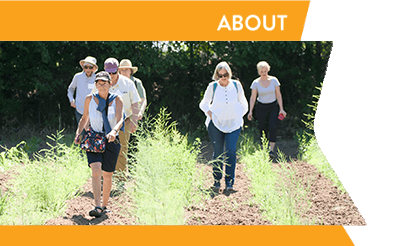New Mexican Posole Verde

When I make posole, I usually wing it. I might use pork, might use lamb, might use chicken or turkey – whatever I have on hand that appeals to me at that moment. But this time, I looked at a number of recipes and decided to be guided by Steve Sando’s New Mexican Posole Verde in his book The Rancho Gordo Pozole Book.
I enjoyed the process, a much more systematic one than my improvisational approaches, and I enjoyed the product, one denser with chiles than any posole I’ve made before. And yet it was not too picante. I used a medium-hot Anaheim type from Santa Cruz Farms, which I bought already roasted and peeled, and so I only had to seed them and chop them. I substituted a two-pound, bone-in pork shoulder roast for pork ribs, and I substituted jalapenos for serranos because I had jalapenos but not serranos. For the posole, lacking Rancho Gordo white, I used a mix of various colors of posole from the market. For the 1 tablespoon of New Mexican chile powder that Sando calls for, I used a medium Chimayo red from Chencho Ochoa. And in this dish, as in most I make, I used more garlic than called for.
My favorite posole garnishes are cabbage, cilantro, radishes, scallions or white onions, and lime juice.
The Recipe
Ingredients
Steve Sando’s Mexican Posole Verde
Serves 6 to 8
For the meat and broth
- 2-3 pounds bone-in country-style pork ribs
- ½ of an onion, chopped
- 3 garlic cloves, smashed
- 1 bay leaf
- 1 tablespoon salt, or to taste
For the chiles
- 4 to 5 Anaheim chiles (or poblanos or New Mexican chiles), about 1 pound
To finish
- 2 tablespoons olive oil
- 1 onion, chopped
- 4 to 5 garlic cloves, minced
- 1 teaspoon ground cumin
- 1 teaspoon ground clove
- 1 tablespoon New Mexican chile powder
- 2 to 3 cups cooked prepared hominy (posole), plus 2 cups of reserved cooking liquid (see Cooked Posole at the end of this recipe)
Garnishes
- Radishes, sliced thin
- Onion, finely chopped
- New Mexican chile powder
- Dried Mexican oregano or Rancho Gordo Oregano Indio
- Crisp lettuce or cabbage, sliced very thin
- Mexican limes or key limes, quartered
- Cilantro chopped
PREPARATION
For the meat and broth
In a large stockpot over medium-high heat, add the ribs, onion, garlic, bay leaf, salt, and enough water to cover meat by 1 inch. Bring to a boil, then immediately reduce heat to a gentle simmer, using a lid to help regulate temperature as needed. Skim and discard any impurities that rise to the top. Continue to simmer for about 90 minutes, adding hot water as needed to keep the meat covered, until meat is tender and falling off the bones.
Remove the pork pieces to a platter. Once cool enough to handle, separate the meat, discarding the bones.
Strain the broth into a very large bowl; cool to room temperature. Chill in the refrigerator for several hours, or overnight, until fat rises to the cop of the bowl and congeals. Remove the fat and reserve for another use.
For the chiles
Roast the Anaheim chiles over a gas burner, rotating frequently until all sides are well charred. (Alternatively, you can heat a dry comal or skillet over high heat and char the chiles by rolling them around the hot pan.) Place the charred chiles in a large bowl; cover with a plate and rest for about 30 minutes. Remove and discard the charred skin. Halve the chiles and remove seeds; wipe the chiles to remove stray bits of burned skin, but try to save any juices. Roughly chop the cleaned chiles and combine with the chopped serrano chiles.
To finish
In a large pot over medium heat, warm the soil. Add the onion and garlic; cook until soft, about 7 minutes. Add the cumin, clove, and chile powder; mix well. Add the chiles, the cooked hominy, and the reserved meat. Mix well.
Add the broth slowly, enough to make a soupy mixture but not so much that the corn and meat are floating, about 7 cups. If you need more liquid, add the reserved hominy-cooking liquid, more broth, or water. Taste the adjust seasoning, as desired. Partially cover the pan and cook for about an hour, reducing heat as needed to maintain a gentle simmer.
Ladle into bowls and serve with your preferred garnishes.
Cooked Posole
- ½ pound Rancho Gordo Prepared Hominy/White Corn Posole
- ½ of an onion, chopped
- A half-pound of dried hominy – about 1 cup – yields approximately 4 cups of cooked hominy
On the stovetop
In a large bowl, soak prepared hominy in enough water to cover by 2 inches; let sit 5 to 8 hours.
In a large stockpot over high heat, combine the prepared hominy and its soaking water. Add additional water, if needed, to cover the hominy by about 2 inches. Add the onion; bring to a boil. Cook for 10 minutes, then reduce heat to medium-low. Continue cookinb at a gentle simmer until the prepared hominy is tender, about 90 minutes. Partially cover the pot as needed to regulate heat, but don’t cover completely or hominy may turn gummy.
Check occasionally, adding hot water from a kettle, as needed, to keep the corn covered by aobut an inch. The hominy is done when it’s no longer chalky but retains some texture. The kernel will also op at one end, causing the hominy to blowwom.
Strain the hominy, reserving at least 2 cups of the cooking liquid for use in your pozole. Refrigerate or freeze any additional liquid for another use.
This locally inspired recipe is brought to you by Pam Walker. Pam is an avid home cook, writer, and local farm and food activist who is also a board member of the Santa Fe Farmers’ Market Institute. Thank you, Pam, for helping inspire us to use locally sourced ingredients!






